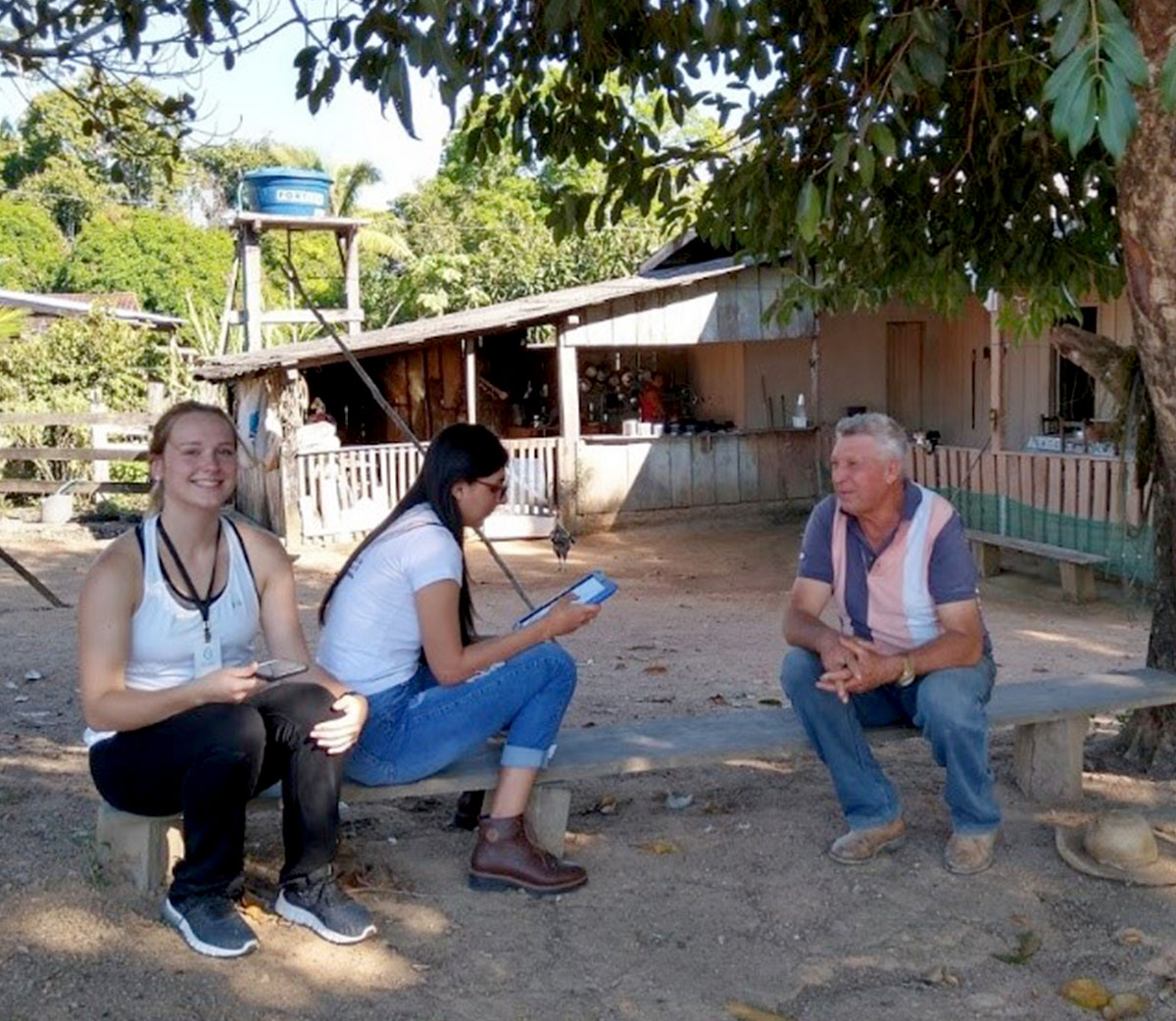An SU Student's View of Field Work in the Brazilian Amazon: Part 1

For more than 20 years, Drs. Jill Caviglia-Harris of Salisbury University’s Economics and Finance and Environmental Studies Departments and Daniel Harris of the Geography and Geosciences Department have studied the effects of land use and deforestation in the Brazilian Amazon, often providing research opportunities for Salisbury graduate and undergraduate students in their endeavors.
As part of an international team of academics, they spent one month this past summer conducting National Science Foundation-funded field work in Rondônia, Brazil, within the Brazilian Amazon. SU environmental studies and political science major Rachel Dubbs followed the researchers and recorded her observations in a series of articles. The first of three appears below.
The Rondônian Environment
A few days ago, I sat down to write about my travels in Rondônia. As I prepared to write, I saw messages from Leonardo DiCaprio, Madonna and other celebrities on social media noting that the Amazon was ablaze. Who would have imagined that one month ago, I was in the exact same location as one of the most trending taglines of the week: #prayfortheAmazon? Alongside the tagline were images of flames consuming mature, green tropical forests and thick, grey smoke concealing the sun.
One of my favorite aspects of Rondônia was the appearance of the vast blue sky dotted with billowy, cumulus clouds. It seems ridiculous, but for some reason, the sky in Rondônia seemed so big, and made you and your surroundings feel incredibly miniscule. That big blue sky had vanished.
Before I arrived in the Brazilian Amazon, I learned that the Rondônian landscape was not what I would expect it to be. My mentors, Drs. Jill Caviglia-Harris, Daniel Harris and Andrew Sharma, Professor of Media at SU, informed me that Rondônia is one of the most deforested states in the Amazon.
Government programs first encouraged migration to the state in the 1970s. During this time, tens of thousands of migrants moved from the more populated urban regions around Sao Paulo and Rio de Janeiro to Rondônia for free land. Rapid deforestation resulted when these migrants cleared land to establish subsistence, family farms.
During my time in Rondônia, I was able to tag along with several Rondônian students who were surveying local farmers as part of the project to gather information about how they lived and used their land. Though I came prepared to see extensive deforestation, I don’t think anything could have prepared me for what I consider an environmental studies student’s worst nightmare.
Our drive to the farmers’ homes included miles and miles of dirt roads cut through expansive pastures without any forests in sight. It often was difficult to breathe because of the dust that was circulating throughout the air. I felt discouraged to see this version of the “Amazon” mostly because I had a short experience of what Rondônia could be.
I couldn’t help but wonder how this dry, dusty climate could be a result of deforestation. When discussing my observations with team members Drs. Trent Biggs, a hydrologist, and Fernando De Sales, a climatologist, professors at San Diego State University, they informed me that Rondônia’s history of deforestation had significantly impacted the environment.
De Sales explained that “fewer trees means less rain,” causing changes to the region’s hydrological cycle. Biggs added that the long-term presence of agriculture, and its continuing intensification, in tandem with declining rainfall, could greatly reduce soil quality. Both predict that farmers eventually will need to adjust behaviors to these shifting environmental conditions.
On my flight back to the U.S., I wondered if what I saw on the Rondônian landscape is the future for all of the Amazon. As I sit here now, days after #prayfortheAmazon has trended, I’ve learned that the fires were started in part because the current Brazilian government views the forested Amazon as an inefficient use of land. President Bolsonaro, whose rhetoric supports continued development and agricultural expansion into the Amazon, rejected international donations to help fight the fires started by his farmer supporters and will likely continue to push to further develop the region. Update: International political and economic pressure forced Bolsonaro’s government to ban dry season burning in the Amazon for the remainder of the year.
